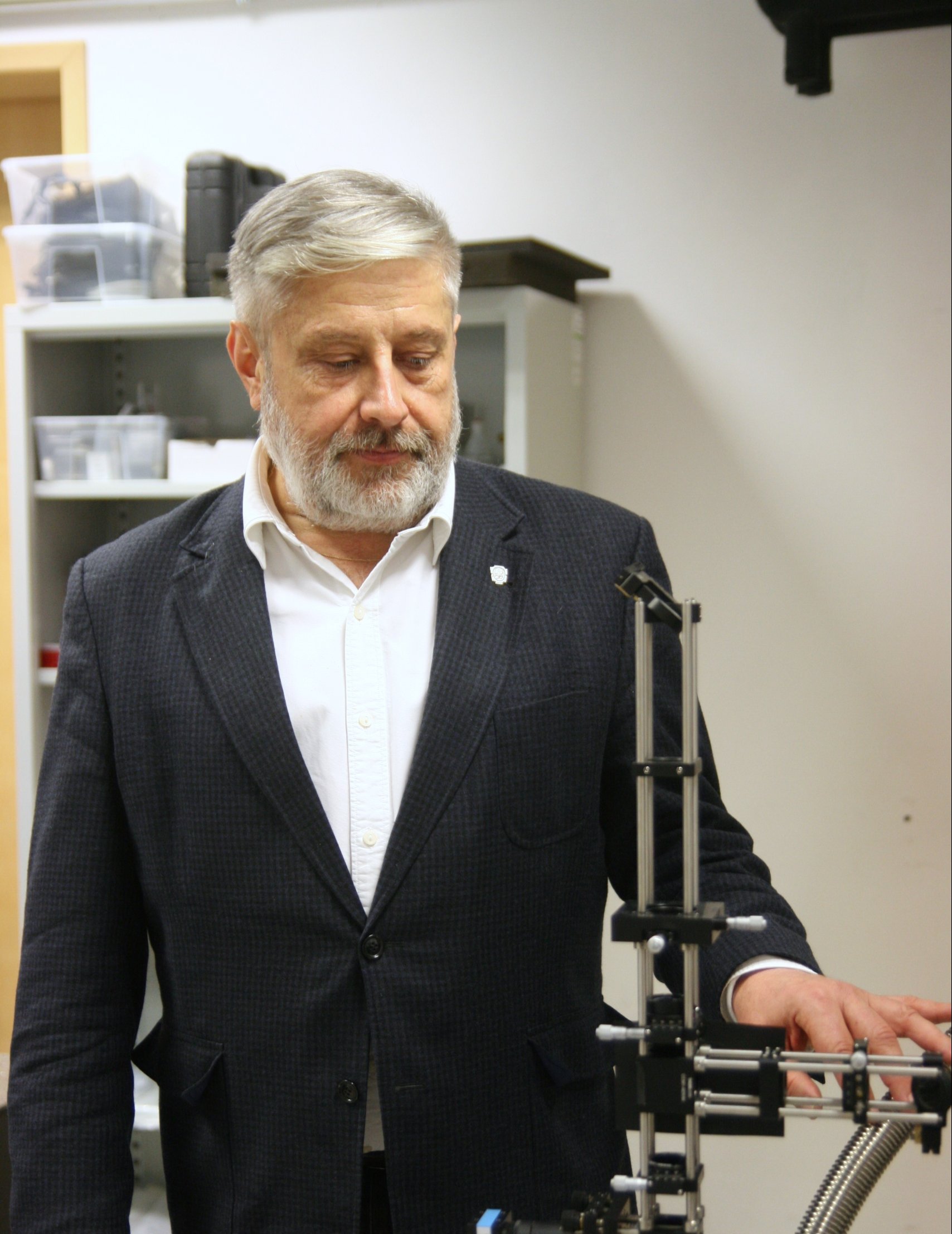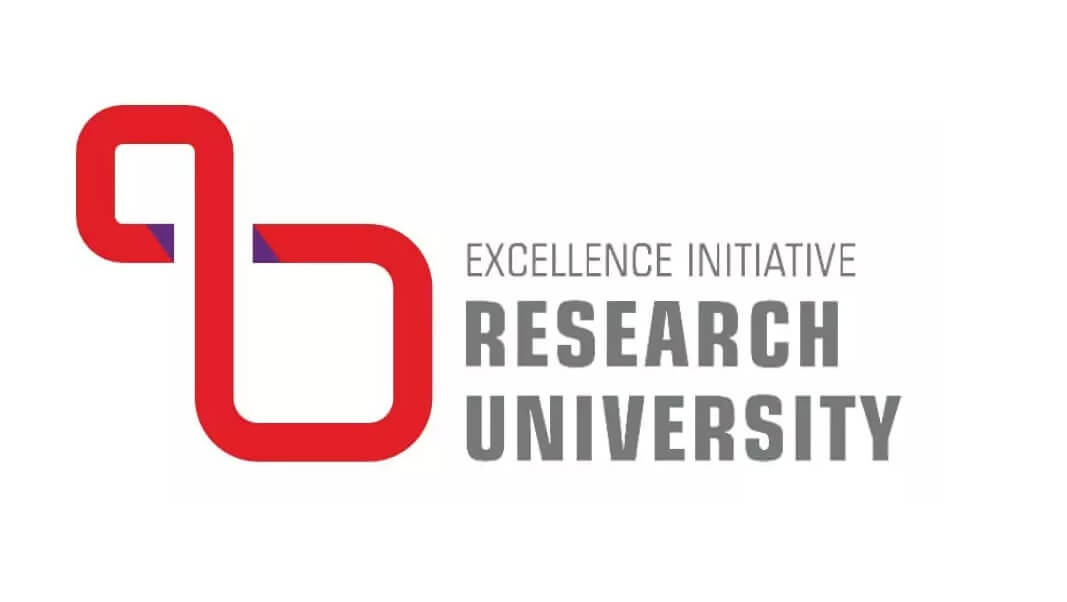The future of science is collaboration: Interview with Prof. Adam Babiński

25 10 2023
Category: Interview, UW Institute for Advanced Studies
We invite you to read our interview with Professor Adam Babiński, Vice-Dean of the UW Faculty of Physics for Financial Affairs. Among other things, we talked about the Polish Roadmap for Research Infrastructures, dynamic cooperation at both national and international levels, and research into magnetic fields.
INSTITUTE FOR ADVANCED STUDIES: What challenges do Polish scientists currently face in accessing advanced research tools?
PROFESSOR ADAM BABIŃSKI: The most important asset of our research centres is our people. The experience and skills of our scientists make them valuable collaborators in international research projects. Polish research centres have very good contacts with a number of units abroad, especially those with large research facilities. In many cases, these collaborations are supported by the Ministry of Education through special projects, such as cooperation with CERN or our study of neutrinos. Currently, the European Magnetic Fields Laboratory project is also supported by a grant from the Ministry, which gives us membership. However, we need to make an effort to maintain these well-functioning systems. And that requires funding.
In particular, I hope that the project to fund Poland’s participation in the European Magnetic Fields Laboratory, which is coming to an end this year, can be continued on the basis of a new application and funding. This is money that exceeds the budgets of individual units, which is why these applications are usually submitted by consortia of different units that jointly express their willingness to carry out projects at these large research facilities and thus obtain sufficient support to pay the contribution in such collaborations. This is, of course, the result of the long-standing collaborations and relationships that our researchers, in particular those from the Faculty of Physics, have with these teams. We have been present at major research facilities for years, and it seems to be yielding good results. Both from the point of view of the experiments carried out there and from our local point of view, because it gives the young people who carry out projects at these facilities, for example, a chance to develop.
So what can we do to develop research infrastructure?
This development is based on two pillars: local infrastructure development and international cooperation.
An example of an action that takes these two pillars into account is the Polish Roadmap for Research Infrastructures. This is because it includes projects that are linked to certain large-scale undertakings and that support domestic infrastructure. These include, for example, the European Magnetic Fields Laboratory + (EMFL+) project, in which the University of Warsaw is involved.
What is the idea behind this project?
Magnetic fields have the distinction of being the primary tool for studying the properties of condensed matter. If we want to understand what surrounds us, we need to know the properties of electrons, which we can study precisely in a magnetic field.
EMFL+ supports Poland’s participation in the European Magnetic Field Laboratory (EMFL), which was set up in response to the fragmentation of magnetic field infrastructure in Europe, the duplication of efforts in many centres and the lack of coordination of research at different levels. It is an international structure that also includes units from France, Germany, the Netherlands and the UK.
The aim of the EMFL+ project is both to support projects within the existing EMFL infrastructure and to create a network of laboratories with unique capabilities complementary to those already in place.
The project involves various centres in Poland that specialise in specific areas of research related to magnetic fields. The idea is to support our local initiatives, to give them a more nationwide character and to support the community interested in research.
And what are the benefits of including such a project in the infrastructure roadmap?
This fact has positive consequences from the point of view of possible funding from various sources. For example, when applying for a large piece of equipment from the Ministry of Education, it is necessary to demonstrate the connection of the possible purchase with a project of wider significance. Such projects are those included in the infrastructure roadmap. The same applies to the Structural Funds. The Faculty of Physics has two major projects that have received funding from the Smart Growth Operational Programme. These projects are the NLPQT project and the geophysics project. The existence of these projects on the infrastructure roadmap has made it possible to provide funding for major investments under these resources. I believe that this can also help us to apply for funding to enable the development of the regional laboratories mentioned in our project.
Does it help to establish more collaborations, including international ones?
I think it does, because to be on this roadmap one had to go through an expert assessment. Qualifying as one of these dozens of projects from different fields is a kind of ennoblement for these teams, and that makes it much easier to make contacts.
What is the impact of projects like EMFL+ on technological development?
History teaches us that all applications are a direct or indirect consequence of basic research. That is why I am glad that the Institute for Advanced Studies has been established at the University of Warsaw, and I firmly believe that it has the potential to explore reality. Perhaps one day such discoveries will find their application, which we cannot yet foresee. What happens in science is that first you are curious to find out about the nature of things, then you carry out research into properties, interactions, and then suddenly you find that this can be applied in practice. At the university, our aim is not directly to produce highly specialised devices, but rather to train young researchers and learn about the physics of these phenomena.
You recently organised a workshop “Magnetic Fields in Materials Research”. What is your assessment of this event?
I am very pleased with what we were able to do thanks to the support of the Institute for Advanced Studies, and I must boast that I received a number of positive feedbacks from the participants of this event. We wanted our consortium members to be present at this meeting. Wrocław University of Science and Technology is a very active member of the consortium, so we chose it to host the conference. During the event, we had the opportunity to listen to lectures presenting the state of research in various units of the consortium.
The second part consisted of presentations by representatives of other EMFL laboratories: in Grenoble, Toulouse, Nijmegen and Dresden. Representatives of other European units involved in magnetic field research, with whom we are jointly implementing the major European infrastructure project ISABEL, also accepted our invitation. In total, there were about 30 presenters from a wide range of European countries, from the UK to Italy and from Spain to Estonia. We had the opportunity to see how each of these laboratories works. And let’s not forget the young researchers who presented posters and had the opportunity to discuss their work with older colleagues. This always helps to gain some perspective.
So you believe in the value and the benefits of exchanges between different generations of researchers?
This is absolutely fundamental. If only for the reason that we are at a university which is hard to imagine without students. We must not forget that development is only possible through the exchange of information between generations. We want to pass on the best of our careers to the next generation of students or young researchers, so that they can continue to pursue their scientific passions and pass on their experience to the next generation. In this way, we hope to perpetuate the idea of the university. We are here not only to teach, but to learn – and to carry the torch of knowledge into the future.
Does this also apply to the dialogue between different disciplines?
The group we are trying to interest in magnetic field research are mainly biologists. The consortium includes the Nencki Institute of Experimental Biology of the Polish Academy of Sciences. One might ask: What has a magnetic field got to do with biological research? Quite a lot, it seems. Many of us have probably experienced a diagnostic examination in a magnetic resonance scanner. Usually, the machines in hospitals use a magnetic field that is not very strong (a few tesla at most). In similar experiments, but using higher magnetic fields, certain biological phenomena can be observed. This opens up new avenues of research and we hope to further exploit this potential.
Another example of interdisciplinary collaboration is the infrastructure project within the Excellence Initiative Research University (IDUB) programme. It turns out that nuclear magnetic resonance (NMR) technology is used in a number of units on our campus. These include the Faculty of Chemistry, the Biological and Chemical Research Centre and the Centre of New Technologies. Our aim was to create a common networked infrastructure to enable the recycling (recovery) of helium gas, which, once liquefied, is required to keep the temperatures in these devices low. I hope that the increased collaboration between the units on the Ochota campus will also lead to greater interest in what our infrastructure roadmap project and our participation in the European Magnetic Fields Laboratory have to offer.
And how do you rate the support from the IDUB programme you mentioned?
I think it really is an excellent opportunity to support research both at the faculty level and at the university level. This observation comes from looking at the figures. Since many of these applications and their implementation reports require the approval of the faculty authorities, they pass through my hands. I therefore have a unique opportunity to get an idea of the scale of this enterprise. I am also sure that every stakeholder who has ever benefited from such support appreciates the fact that they have received it and hopes for more.
Interviewed by: Agata Sawicka
Photo: Professor Adam Babiński in the Laboratory of Optical Spectroscopy (LaSsO), author: Marta Kowol.

